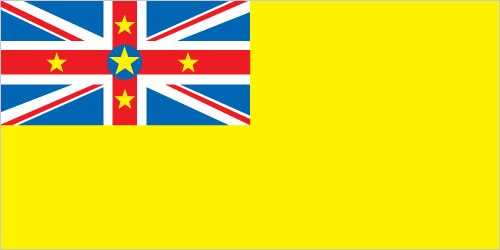Introduction
Background
Samoans settled Niue around A.D. 900, followed by Tongans around 1500. In 1889, tribal chiefs asked the UK for protectorate status, which was granted in 1900. In 1901, Niue was annexed to New Zealand as part of the Cook Islands. Niue became self-governing in 1974, in free association with New Zealand, which is responsible for its defense and foreign affairs. In September 2023, the US recognized Niue as a sovereign and independent state.
Geography
Area
total : 260 sq km
land: 260 sq km
water: 0 sq km
Climate
tropical; modified by southeast trade winds
Natural resources
arable land, fish
People and Society
Population
total: 2,000 (2022 est.)
Ethnic groups
Niuean 65.4%, part-Niuean 14%, non-Niuean 20.6% (2017 est.)
Languages
Niuean 46% (official, a Polynesian language closely related to Tongan and Samoan), Niuean and English 32%, English (official) 11%, Niuean and others 5%, other 6% (2011 est.)
Religions
Ekalesia Niue (Congregational Christian Church of Niue - a Protestant church founded by missionaries from the London Missionary Society) 61.7%, Church of Jesus Christ 8.7%, Roman Catholic 8.4%, Jehovah's Witness 2.7%, Seventh Day Adventist 1.4%, other 8.2%, none 8.9% (2017 est.)
Population growth rate
-0.03% (2021 est.)
Government
Government type
parliamentary democracy
Capital
name: Alofi
Executive branch
chief of state: King CHARLES III (since 8 September 2022); represented by Governor-General of New Zealand Cindy KIRO (since 21 October 2021); the UK and New Zealand are represented by New Zealand High Commissioner Mark GIBBS (since 5 March 2024)
head of government: Prime Minister Dalton TAGELAGI (since 10 June 2020)
Legislative branch
summary: unicameral Assembly (20 seats)
Economy
Economic overview
upper-middle-income self-governing New Zealand territorial economy; environmentally fragile; massive emigration; post-pandemic tourism rebound; postage stamps, small-scale agricultural processing, and subsistence farming; most recent Asian Development Bank member
Real GDP (purchasing power parity)
$18.7 million (2021 est.)
$19.9 million (2020 est.)
$20.9 million (2019 est.)
Real GDP per capita
$11,100 (2021 est.)
$11,800 (2020 est.)
$12,400 (2019 est.)
Exports
$5.68 million (2021 est.)
Exports - partners
US 56%, Brazil 9%, UK 6%, Kuwait 4%, Australia 4% (2022)
Exports - commodities
broadcasting equipment, abrasive powder, collector's items, coin, milling stones (2022)
Imports
$43.8 million (2021 est.)
Imports - partners
UK 46%, NZ 31%, Japan 19%, Brazil 1%, US 1% (2022)
Imports - commodities
iron structures, ships, refined petroleum, plastic products, cars (2022)
Page last updated: Tuesday, September 10, 2024



